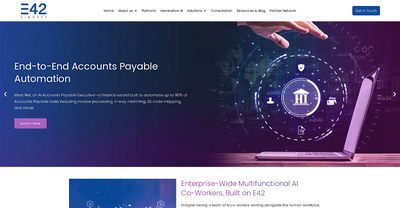SED (Semantic Entities Designs)

What is SED (Semantic Entities Designs)?
SED, or Semantic Entities Designs, is a tool that transforms any database into an AI-ready semantic layer. It helps businesses integrate AI with their databases by automatically detecting business logic, protecting sensitive data, and enforcing compliance rules. With SED, users can connect their database, get intelligent business logic detection, and enforce security guardrails for safe AI integration.
Benefits
SED offers several key advantages for businesses looking to integrate AI with their databases:
- Automated Business Logic Detection: SED automatically detects and understands the business logic within your database, saving time and reducing manual effort.
- PII Protection: It includes advanced features to protect personally identifiable information (PII), ensuring data privacy and compliance.
- Compliance Enforcement: SED enforces compliance rules, making it easier to meet regulatory requirements.
- Ease of Use: With just one command, users can connect their database and get production-ready AI integration.
- Multi-Database Support: SED supports various databases, including PostgreSQL, MySQL, and SQLite, with auto-detection capabilities.
Use Cases
SED is particularly useful in scenarios where businesses need to integrate AI with their databases. Some common use cases include:
- Data Analysis: Businesses can use SED to analyze large datasets with AI, gaining insights and making data-driven decisions.
- Customer Relationship Management (CRM): SED can help CRM systems integrate AI to provide better customer insights and personalized experiences.
- Financial Services: Banks and financial institutions can use SED to enforce compliance rules and protect sensitive financial data.
- Healthcare: Healthcare providers can use SED to integrate AI for better patient data management and analysis while ensuring compliance with healthcare regulations.
How It Works
SED simplifies the process of integrating AI with databases through a few straightforward steps:
- Connect Database: Users connect their existing database to SED.
- Semantic Mapping: SED performs intelligent semantic mapping, transforming technical schema into business concepts.
- Business Rules Engine: SED auto-generates rules to protect data and enforce business logic.
- AI-Ready Integration: With these steps completed, the database is ready for AI integration.
Additional Information
SED is designed to save businesses months of work by automating complex database-AI mapping, business logic detection, and security compliance. It supports multiple databases and provides instant AI integration, making it a valuable tool for any business looking to leverage AI technology.
SED - The semantic layer for AI integration.
This content is either user submitted or generated using AI technology (including, but not limited to, Google Gemini API, Llama, Grok, and Mistral), based on automated research and analysis of public data sources from search engines like DuckDuckGo, Google Search, and SearXNG, and directly from the tool's own website and with minimal to no human editing/review. THEJO AI is not affiliated with or endorsed by the AI tools or services mentioned. This is provided for informational and reference purposes only, is not an endorsement or official advice, and may contain inaccuracies or biases. Please verify details with original sources.






Comments
Please log in to post a comment.